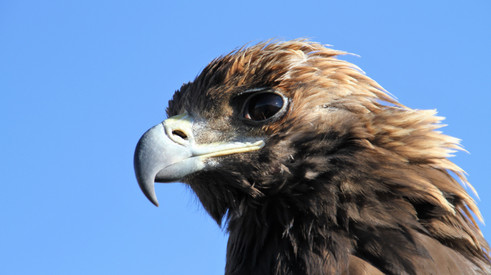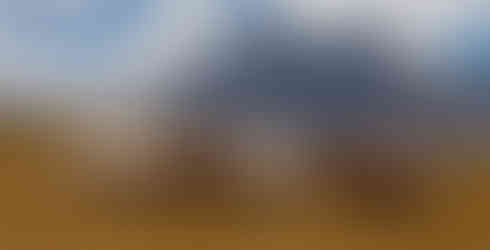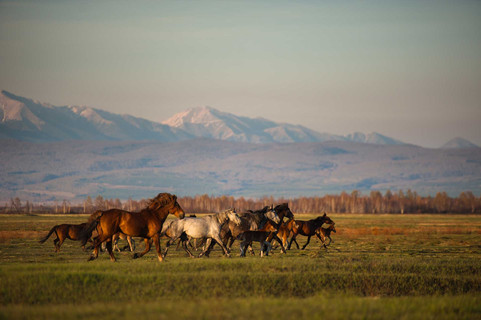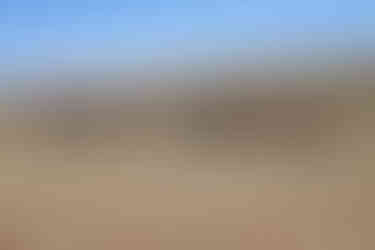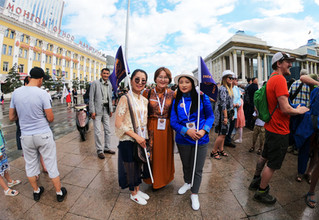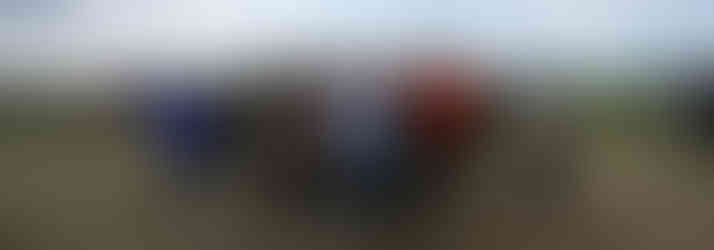About Mongolian Gobi Desert, Altai range and Khinggan range
- Enkhzaya Ganbold
- Aug 5, 2019
- 4 min read
Updated: Nov 20, 2023
Mongolian Gobi Desert
Gobi (Cyrillic, gowi) in Mongolian refers to gravelly or sandy desert, drier than the grassy steppe and uninhabited by marmots but still with some vegetation and human habitation. (Totally uninhabited land is called tsöl.)

The Gobi Desert occupies roughly the southern third of Mongolia proper, and while the term is not so commonly used in Chinese geographical classification, it also includes the land along China’s northern border from Sönid Left Banner (Sonid Zuoqi) in Inner Mongolia to Barköl in Xinjiang.

The Gobi Desert occupies about Seven hundred seventy-five thousand square kilometres (300,000 square miles), or about 1 million square kilometres (390,000 square miles) if the mostly tsöl-deserts of ALASHAN are included. The Gobi is a mostly level plain 700–1,600 meters (2,300–5,250 feet) Above sea level and entirely enclosed within the Central Asian inland drainage basin.
Our Mongolian Gobi Desert Tours
Climate in the Gobi Desert
Annual precipitation is generally less than 150 millimetres (6 inches), and average temperatures range from 25°C (77°F) in July to –15° to –20°C (5° to –4°F) in January. Strong winds in the spring and fall create powerful dust storms.
Facts about the Mongolian Gobi Desert
The Mongolian Gobi Desert is an extraordinary ecosystem that captivates the imagination of scientists, historians, and explorers from around the world. This exceptional landscape harbors secrets and wonders that have shaped our past and will determine much of our environmental future. Here are some compelling insights into this unique desert:
Refuge of the Rare and Remarkable: The Gobi is not just a desert; it's a lifesaving sanctuary. It protects some of the most exceptional creatures, including the revered Gobi bear, known locally as Mazaalai, and the resilient wild Bactrian camel. Both species are desert rarities, calling the harsh environment of the Gobi home, and they teeter precariously on the edge of extinction.
Cradle of Paleontological Riches: The desert's ancient sands whisper secrets of a prehistoric world, having yielded groundbreaking paleontological discoveries. It was here, nestled among the Flaming Cliffs, that the world's first dinosaur eggs were uncovered, cementing the Gobi's place in scientific history. These sites continue to offer invaluable insights, unearthing tales of life on Earth millions of years ago.
Silk Road's Formidable Passage: The Gobi Desert was once traversed by the legendary Silk Road, acting as a bridge between distant civilizations. This vital artery of ancient commerce, culture, and knowledge sharing tested the mettle of the most seasoned travelers, with the desert's relentless landscape forging narratives of human tenacity and ingenuity.
Realm of Climatic Extremes: The Gobi is a land of environmental paradoxes, characterized as a cold desert with temperature extremes that are a true test of survival. It oscillates between scorching summer highs and frigid winter lows, presenting a daily challenge for all who dwell here, with rapid shifts that can be as unpredictable as they are extreme.
Astronauts' Terrestrial Moon: With its desolate, otherworldly terrains, the Gobi provided the perfect analogue environment for American astronauts training for lunar missions. Its vast, unforgiving landscape offered a glimpse of the moon's surface, helping prepare those daring to step into the unknown.
Legacy of Nomadic Culture: The cultural tapestry of the Gobi is as rich and enduring as its sands. The age-old nomadic traditions reflect a profound symbiosis with the land. From the iconic, portable Ger dwellings to the deep understanding of desert pastoralism, the inhabitants of the Gobi have crafted a way of life in harmony with a demanding environment.
Melodies of the Sands: Amidst the vast silence, the Gobi's dunes craft their own symphony, known as the 'singing sands.' This remarkable phenomenon at places like Khongoryn Els occurs when wind orchestrates the movement of sand particles, creating haunting melodies that add mystery and wonder to this already enigmatic landscape.
Preservation Battlefront: The modern era has brought with it daunting challenges, with climate change, unsustainable practices, and industrial expansion threatening the delicate balance of the Gobi's ecosystem. The survival of its indigenous nomadic culture and the vast biodiversity rests on urgent, global conservation efforts.
The Mongolian Gobi Desert is an epic narrative of survival, resilience, and natural wonder. It's not merely a geographical feature but a dynamic living library. Its layers of historical, cultural, and biological significance offer profound lessons, reminding us of our enduring connection to the environment and our role in safeguarding its future.
Top Questions about the Gobi Desert
Where does the Gobi Desert lie? The majestic Gobi Desert stretches majestically across southern Mongolia and penetrates the northern reaches of China, marking a natural wonder that bridges two countries.
What is the size of the Gobi Desert? Encompassing an impressive area of approximately 1,295,000 square kilometers, the Gobi Desert stands among the world's expansive deserts, offering a vast, intriguing wilderness.
What characterizes the Gobi Desert? Noted for its harsh yet captivating terrain, the Gobi Desert stands as one of Asia's prominent deserts, boasting a blend of vast barren expanses, rocky formations, and occasional vegetative patches—a testament to nature's stark beauty.
Which territories encompass the Gobi Desert? This remarkable desert claims parts of two nations—Mongolia and China—each sharing a portion of its vast, awe-inspiring wilderness.
What notable wildlife resides in the Gobi Desert? The Gobi Desert is a sanctuary for an array of specialized fauna, including the iconic Bactrian camel, the elusive Gobi bear, and the majestic snow leopard, each adapting ingeniously to survive in this extreme environment.
In what ways does the Gobi Desert contrast with the Sahara Desert? While the Sahara basks in its sandy dunes and torrid heat, the Gobi Desert presents a stark contrast with its rocky, gravel-laden terrain and significantly cooler temperatures, particularly during its brutal winters.
How does the Sahara Desert compare with the Gobi Desert? The Sahara Desert, with its iconic golden dunes and scorching climates, provides a different desert tableau compared to the Gobi's rugged landscape and temperature extremes that swing between scalding summers and icy winters.
How is the Gobi Desert categorized? Renowned as a cold desert, the Gobi experiences dramatic temperature fluctuations and is geographically positioned in a region where extreme cold is as integral to its identity as its aridness.
What temperature heights does the Gobi Desert reach in summer? The summer in the Gobi Desert ushers in intense heat, with the mercury often soaring to around 40°C (104°F), testing the limits of life in its embrace.
What distinguishes the Gobi Desert? The Gobi Desert captivates the imagination with its Flaming Cliffs—a spectacular geological phenomenon—and its historical footprint as a crucial corridor on the ancient Silk Road, where cultures met, mingled, and traded.
What constitutes the importance of the Gobi Desert? The desert is a reservoir of ecological diversity and historical narratives, underlined by its critical role in ancient trade networks and its distinctive biodiversity, which continues to draw scientific and historical interest.
How would you describe the climate near the Gobi Desert's borders? Adjacent areas to the Gobi Desert experience a milder, semi-arid to steppe climate, forming transitional zones that support a unique blend of life adapted to less extreme desert conditions.
On which continent can the Gobi Desert be found? The Gobi Desert marks its presence on the Asian continent, adding to the region's geographical diversity.
How extensive is the Gobi Desert? The Gobi Desert unfurls across an estimated length of 1,600 kilometers, presenting a formidable natural expanse from its southwestern edges to its northeastern boundaries.
What historical lifestyle thrived north of the Gobi Desert? Historically, Mongol societies north of the Gobi Desert honed a nomadic existence, mastering the art of pastoralism and establishing a culture renowned for its equestrian skills and tribal solidarity, often expressed through formidable cavalry warfare.
Why is the Gobi Desert a focus for historians and scientists? With its trove of dinosaur fossils and the visually arresting Flaming Cliffs, the Gobi Desert serves as a monumental site for both historical and scientific research, offering invaluable insights into prehistoric eras and natural history.
What does the term "Gobi Desert" signify? "Gobi" reflects the harsh truth of the landscape, derived from the Mongolian language, where it conveys the sense of a "waterless place"—a fitting testament to the desert's arid and formidable nature.
How intense does the cold get in the Gobi Desert during winter? Winter unveils the desert's harsh extremity, with temperatures plunging to severe lows of around -40°C (-40°F), a stark reminder of the region's inhospitable climate extremes.
Animals in the Gobi Desert
The core of the Gobi along southern Mongolia and Urad and northern Alashan banners is gravelly with Scattered thickets of deep-rooted xerophytic trees and bushes such as saxaul (Haloxylon ammodendron), eaumuria soongarica, and Ephedra przewalskii.
To the north and east there are zones first of Gobi feather grass (Stipa gloriosa) and grey sagebrush (Artemisia xerophytic), and then of steppe needle grass (Stipa krylovii) and pasture sage (Artemisia frigida; Mongolian agi), and finally genuine steppe. The Gobi zone south of the ALTAI RANGE is called the Trans-Altai Gobi. Gobi herding emphasizes meat and semi-fine-haired sheep, goats, and two- hump camels.
The desert’s few towns are mostly small administrative and retail trade centres; Sainshand and Saikhan Tal along the TRANS-MONGOLIAN RAILWAY and the mining town of Bayan Oboo are the only ones with populations more than 20,000.
Mongolian Khangai Range
The main body of the Khangai Range runs northwest to southeast through west-central Mongolia, with the ridges at an average height of 3,000 meters (9,800 feet) above sea level.
In Mongolian khangai means mountainous forest-steppe, which the northern Khangai exemplifies. The southern slopes facing the Gobi, however, are drier and scored by seasonal rivers.

Branch ranges north of the main range, such as the Bulnai and Tarwagatai, run east-west or northeast. The highest peak in the Khangai and the only one with perpetual snow is Otgon Tenger (4,021 meters; 13,192 feet).

The Khangai’s high ridges receive about 400–500 millimetres (16–20 inches) of precipitation annually and are the source of many of Mongolia’s major rivers.

Rivers flowing northeast (including the ORKHON RIVER, and the Tamir, Khünüi, Chuluut, and Ider Rivers) join the SELENGE RIVER and eventually drain into the Arctic.
Those flowing south (including the Zawkhan, Baidrag, Tüi, and Ongi) drain either into the GREAT LAKES BASIN or disappear in the GOBI DESERT.
Mongolian Altai Range
Forming the traditional western border of Mongolia, the Altai Range and associated ranges extend more than 1,600 kilometres (1,000 miles) from northwest to southeast. The name is of Turkish origin and means “golden.”
To the north in Russia’s Altai Republic, the Altai system is about 350 kilometres (220 miles) wide, tapering to the southeast to about 150 kilometres (90 miles). In the central Mongolian Altai, the ridges have an average altitude of 3,000–3,500 meters (9,800–11,500 feet) above sea level.

High peaks include Belukha (4,506 meters; Fourteen thousand seven hundred eighty-three feet), on the Russia-Kazakhstan frontier; Khüiten(4,374 meters; 14,350 feet), at the meeting of Mongolia, China, Russia, and Kazakhstan; and Mönkh-Khairkhan(4,231 meters; 13,881 feet), south of KHOWD CITY.
These peaks and many others are glaciated. In the aridGobi-Altai Range, the peaks diminish toward the southeast from around 3,500 to 1,700 meters (11,500–5,600feet) above sea level. The Mongolian Altai presents relatively gentle slopes to the northeast toward the GREAT LAKES BASIN and steep Slopes to the southwest toward Xinjiang’s Zünghar (Junggar) Basin.
The transverse Siilkhem/Sayluygem Range along the Russia-Mongolia frontier divides the Ob’drainage from the Great Lakes Basin inland basin. The Mongolian Altai shares the Irtysh drainage and theZünghar inland basin to the west from the Great Lakes Basin to the east.
Greater Khinggan Range (Da Hinggan Ling, Khingan Range, Ta Hsing-an Ling)
The traditional eastern boundary of Mongolia, the Greater Khinggan Range runs northeast to southwest through eastern Inner Mongolia. Independent Mongolia touches the Khinggan foothills only in the far east. (The Lesser Khinggan Range lies farther east in Manchuria.)

The Greater Khinggan Range About 1,400 kilometres (870 miles) long and 200–450kilometers (125–280 miles) wide. The ridges have an average altitude of around 1,000–1,600 meters (3,300–5,200feet) above sea level; the highest peak is the Khonggo Peak (Honggaoliang or Huanggangliang, 2,029 meters, or 6,657feet) near the range’s southern end.
The eastern slopes are relatively steep, while those in the west slope gently toward the MONGOLIAN PLATEAU. Nowhere slopes exceed 500 meters (1,640 feet) in height, and the range bridges are rounded and indistinct, with flattened summits. The range separates the Manchurian drainage basins of the
About Enza Tours LLC
If you want to make a Mongolian tour, we are the Mongolian travel agency, can create your unique trip in Mongolia. We also have other Mongolia tours, and while you travel, you can try the Khuvsgul with other destination, local nomadic family, and we can help you create a trip for you.
Just write an email to us, we will plan your tour with you and let’s create your happiness together.
We offer you the below tours and join our current tours:
Mongolian Khuvsgul lake tour (including Tsaatan community)
Discover the Mongolian culture
Mongolian horse or camel tour
We also work with a local travel agency such as eagle hunting show
We are Enza Tours LLC, the official tour operator, and we create Mongolia tours.
Our customers will discover the nomadic Mongolian people, the vast Gobi desert, reindeer community, ancient Mongolian capital, Mongolian customs and traditional Mongolian food. In addition to that beautiful nature will amaze the customers.
































